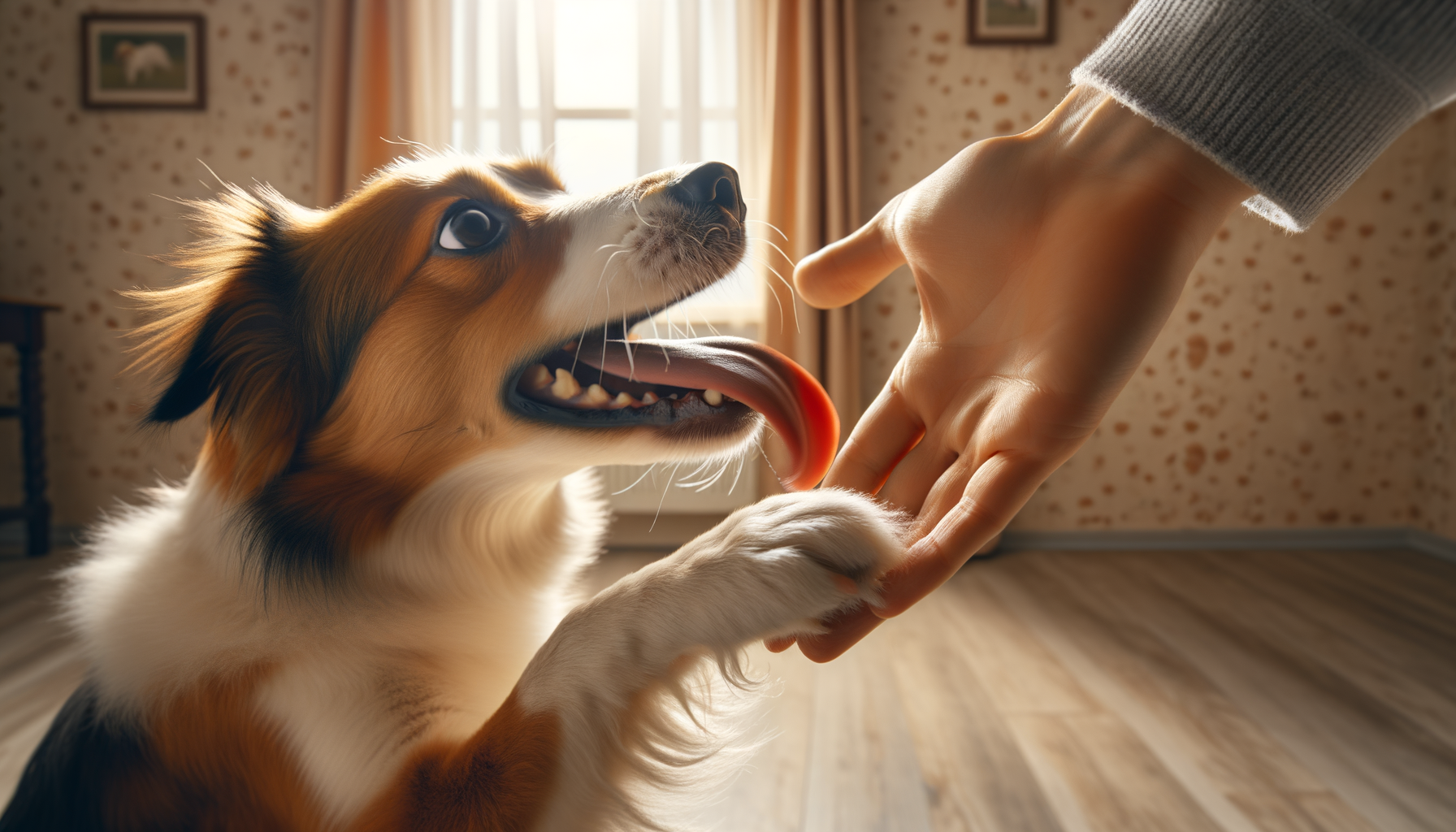Why Does Your Dog Lick You? The Surprising Truth Behind Dog “Kisses” and Pawing
Discover the reasons behind your dog’s licking behavior and pawing, and learn how these actions are connected to their care and communication.

Introduction to Dog Licking and Pawing
Every dog owner has experienced that moment when their furry friend showers them with wet kisses or gently paws at them. These actions, while seemingly simple, carry deep meanings rooted in canine behavior. Understanding why your dog licks and paws can enrich your relationship and enhance the care you provide. This article delves into the reasons behind these behaviors, exploring their significance in communication and care.
The Science Behind Dog Licking
Licking is a multi-faceted behavior in dogs, often interpreted as a sign of affection. However, the reasons extend beyond mere love. From a biological standpoint, licking is a natural instinct. Puppies are licked by their mothers for grooming and bonding, which establishes licking as a comforting action. Moreover, dogs possess taste buds that are sensitive to salt, which might explain their attraction to human skin. Licking releases pleasurable endorphins in dogs, reinforcing the behavior as a soothing activity.
Additionally, licking can serve as a form of communication. Dogs may lick to convey submission or to appease a more dominant member of their social group, including humans. It is also a way for dogs to explore their environment, as their tongues can gather sensory data. Understanding these nuances can help owners interpret their dog’s intentions more accurately.
Pawing: A Gesture of Communication
While licking is often seen as affectionate, pawing is another form of canine communication that holds various meanings. Dogs may paw at their owners to seek attention or express a need. This behavior can be traced back to a dog’s ancestors, who used their paws to dig and manipulate their environment. In a domestic setting, pawing is a dog’s way of saying, „Notice me!“ or „I want something.“
Pawing can also indicate a desire for play or a request for food. Observing the context in which your dog paws can provide insights into their current needs or emotions. For instance, a dog that paws while wagging its tail might be in a playful mood, whereas a dog that paws persistently may be seeking comfort or expressing anxiety.
Training and Managing Licking and Pawing
While licking and pawing are natural behaviors, they can sometimes become excessive or problematic. Training can help manage these behaviors without suppressing your dog’s natural instincts. Positive reinforcement is an effective method, rewarding your dog for appropriate behavior and gradually redirecting excessive licking or pawing.
For licking, providing chew toys or engaging your dog in activities can redirect their attention. If pawing becomes excessive, teaching commands such as „sit“ or „stay“ can help manage the behavior. Consistency and patience are key in training, as dogs thrive on routine and clear expectations.
Conclusion: Embracing Canine Communication
Understanding why dogs lick and paw allows owners to respond more empathetically and effectively to their pets‘ needs. These behaviors are not just random actions but are deeply rooted in communication and care. By observing and interpreting these gestures, owners can strengthen their bond with their dogs and ensure a harmonious relationship.
Ultimately, embracing these natural behaviors and working with them, rather than against them, can lead to a more fulfilling experience for both you and your furry companion. As you continue to care for your dog, remember that each lick and paw is a part of their unique way of expressing love and trust.